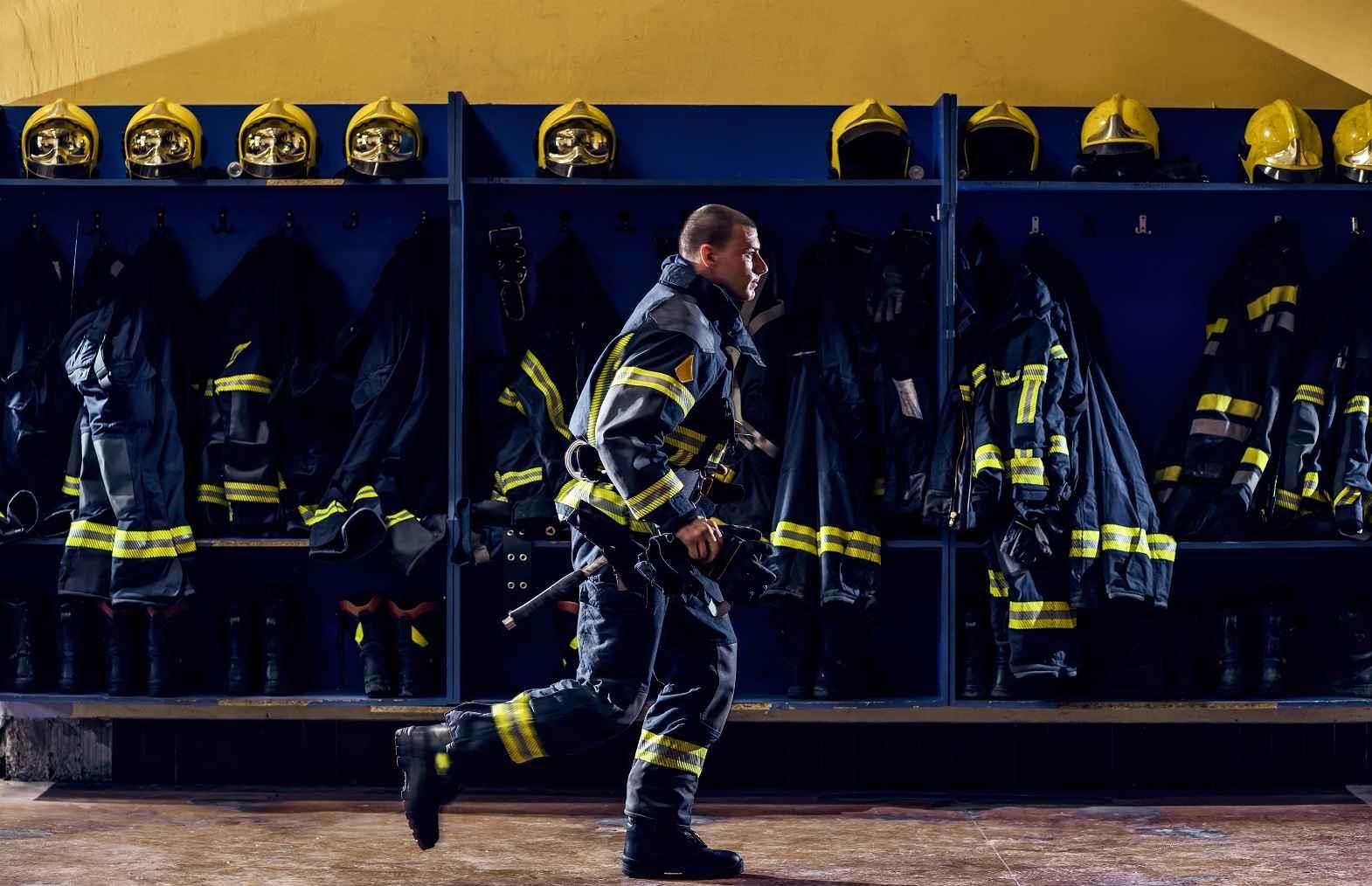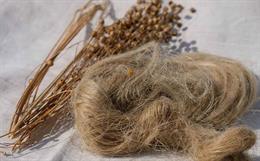If you have not encountered technical textiles before, prepare to be impressed! Today, technical textiles represent a groundbreaking advancement in apparel design. Their applications span diverse fields, including medical textiles, functional clothing, smart textiles, protective textiles, and the military sector, showcasing a vast array of uses across various types of apparel. This article will delve into what technical textiles are and how they are transforming garment design, offering a comprehensive look at their role in revolutionising the clothing industry.
At present, technical textiles play a significant role in our daily lives. These specially manufactured fabrics are designed with specific attributes and performance benefits in mind. When blended with fashion, they represent a modern approach to fabric development, utilising cutting-edge techniques and processes to create materials that exceed the limitations of traditional textiles. Unlike conventional fabrics, technical textiles offer enhanced functionality and performance, providing benefits such as water resistance, protection from extreme temperatures, improved breathability, and flexibility—all aimed at enhancing comfort.
These advanced fabrics are used in a wide range of products, from outdoor gear and medical supplies to industrial machinery, airbags, and automotive interiors. In clothing design, technical textiles have fundamentally changed how we conceive and create garments, unlocking new possibilities for style, comfort, and protection.
Revolutionising Fashion with Technical Fabrics
In today’s rapidly evolving clothing industry, technical textiles are playing a crucial role. These distinctive fabrics, crafted from advanced materials, offer numerous benefits to the wearer. Technical textiles are revolutionising clothing design by enhancing performance, durability, and functionality. They allow the creation of garments that are more resistant to environmental factors such as moisture, heat, and UV radiation. Additionally, many technical textiles feature advanced properties like breathability, moisture-wicking, and even self-cleaning capabilities, all of which contribute to greater comfort and convenience.
With their ability to incorporate smart technologies and adapt to various conditions, technical textiles open up exciting possibilities for innovative and practical clothing solutions. These fabrics are truly transforming clothing design with their remarkable properties, making them a game-changer in the industry. Here’s a detailed look at how they are reshaping the apparel sector:
- Lightweight: Technical fabrics are engineered to be significantly lighter than traditional materials, which is particularly advantageous for sportswear and outdoor apparel, where reduced weight enhances comfort and performance. Additionally, these fabrics are highly breathable, allowing air to circulate and preventing heat build-up. As a result, wearers stay cool and dry, even during intense physical activity.
- Versatility: One of the standout features of technical textiles is their versatility. These fabrics can be adapted for a wide range of applications, from high-performance athletic wear to everyday casual clothing and even formal evening attire. This adaptability allows fashion designers to create garments that are not only functional but also stylish, catering to various needs and occasions. Whether it is a moisture-wicking sports shirt or a sleek, water-resistant evening gown, technical textiles offer options for every aspect of a wardrobe.
- Durability: Another significant advantage of technical textiles is their durability. These fabrics are designed to withstand rigorous use and frequent wear, making them ideal for long-lasting wardrobe staples. They resist abrasion, tears, and general wear and tear more effectively than traditional fabrics. Moreover, technical textiles maintain their shape and size, even when exposed to moisture, ensuring garments retain their fit and appearance over time, without stretching or shrinking.
Overall, technical textiles represent a revolutionary breakthrough in clothing design. Their lightweight nature enhances comfort, their versatility supports a wide range of applications, and their durability ensures longevity. These advancements are reshaping the fashion landscape, providing innovative solutions that will remain influential in the industry for years to come.
High-Performance Functional Textiles with Diverse Applications
High-performance functional textiles are revolutionising various industries with their advanced capabilities. Designed to enhance performance, durability, and comfort, these textiles are tailored for a wide range of applications, from sportswear and outdoor gear to medical and safety apparel. They offer innovative features such as moisture-wicking, breathability, and resistance to environmental factors, ensuring optimal functionality even in extreme conditions. With the integration of smart technology and adaptive properties, these textiles not only respond dynamically to environmental changes but also contribute to sustainability through eco-friendly innovations. By addressing specific needs such as protection, comfort, and environmental resilience, high-performance textiles are setting new standards in both everyday and high-risk environments.
1. Performance Enhancement
Performance enhancement in technical textiles involves using advanced materials designed to optimise the wearer’s capabilities in various settings, such as sports, outdoor environments, and protective gear. In activewear, these textiles improve athletic performance by offering flexibility, moisture-wicking properties, and muscle support through compression, allowing athletes to move freely while reducing fatigue. Outdoor gear benefits from lightweight, breathable, and durable fabrics that protect against elements like rain, wind, and cold, ensuring comfort and mobility in extreme conditions. In safety gear, technical fabrics provide protection from hazards such as fire, chemicals, and abrasions while maintaining the wearer’s mobility, crucial for professionals like firefighters and industrial workers. In medical settings, performance textiles enhance healing and hygiene, with antimicrobial fabrics and compression garments preventing infections and improving circulation.
Applications: Sportswear/activewear, outdoor adventure gear, protective safety gear, and medical textiles.
2. Durability
Durability is a standout feature of technical textiles, especially in industries like outdoor gear, military uniforms, and workwear, where garments are frequently exposed to harsh conditions. These textiles are crafted to maintain their strength and integrity over time, reducing the need for frequent replacements and saving time and resources. Techniques such as abrasion resistance and specific manufacturing processes enhance their durability, making them ideal for industries requiring long-lasting functionality.
Applications: Industrial uniforms, construction gear, and extreme sports clothing.
3. Resistance to Environmental Factors
Technical textiles can be designed to resist environmental factors, making them highly effective in extreme conditions. Moisture resistance, like waterproof fabrics treated with Durable Water Repellent (DWR), protects the wearer from rain while maintaining breathability. Heat-resistant textiles, such as Nomex, are used in high-temperature environments like firefighting or industrial settings. UV-resistant fabrics block harmful ultraviolet rays, providing protection for outdoor activities, particularly in summer.
Applications: Raincoats, firefighter gear, and UV-protective beachwear.
4. Breathability
Breathability is a key characteristic in fabrics used for sportswear, activewear, and outdoor gear. Breathable textiles allow air and moisture to pass through the fabric, ensuring comfort even during intense physical activity. They help regulate body temperature and wick away sweat, preventing overheating and discomfort. Good airflow also reduces the risk of skin irritations, making breathable textiles essential for prolonged wear in active environments.
Applications: Athletic clothing, outdoor gear, and military uniforms.
5. Moisture-Wicking
Moisture-wicking fabrics pull sweat away from the body, transferring it to the outer layers of the fabric, where it evaporates quickly. This feature keeps the wearer dry and comfortable, particularly during activities like running or yoga. Moisture-wicking fabrics help prevent chafing and discomfort caused by excessive sweating, while also maintaining optimal body temperature during workouts.
Applications: Sports apparel, running gear, and yoga wear.
6. Self-Cleaning Capabilities
Some technical textiles are designed with self-cleaning properties, reducing the need for frequent washing. These fabrics are treated with special coatings that resist stains, water, and dirt. When exposed to sunlight or water, the coatings break down dirt particles, making cleaning easier. This innovation helps reduce water and energy use, making these fabrics more sustainable. Self-cleaning textiles are practical for daily wear or environments where garments are frequently exposed to dirt and moisture.
Applications: Casual wear, uniforms, and outerwear.
7. Smart Textiles and Wearable Technology Integration
The integration of smart technology with textiles is revolutionising how clothes function. Smart textiles can sense and respond to environmental changes such as temperature, light, and movement. For instance, clothing can be embedded with sensors that monitor health conditions like heart rate or muscle activity, making them valuable for healthcare and sports. Some smart textiles feature built-in heating elements, allowing them to adjust warmth levels based on the wearer’s needs.
Applications: Health-monitoring clothing, heated jackets, and adaptive sportswear.
8. Adaptive Textiles
Adaptive textiles respond to environmental changes or body conditions, adjusting their properties for enhanced comfort and performance. These fabrics can react to stimuli like temperature or moisture, altering their structure to suit the wearer’s needs. For instance, in cold weather, adaptive textiles may trap heat, while in hot weather, they promote breathability. This makes them ideal for extreme conditions or activities where performance and comfort must be optimised in real-time.
Applications: Cold-weather gear, space suits, and performance wear.
9. Sustainability and Eco-Friendly Innovations
Sustainability is a growing concern in the textile industry, leading to the development of eco-friendly technical textiles. These fabrics are often made from recycled materials, biodegradable fibres, or renewable resources such as organic cotton or bamboo. Sustainable textiles maintain high performance levels, such as durability and breathability, while reducing environmental impact. The push towards sustainability is meeting consumer demand for greener, more responsible products.
Applications: Sustainable fashion, eco-friendly sportswear, and reusable bags.
10. Protective Features
Technical textiles provide enhanced protection against hazards, including physical injuries, chemicals, and biological threats. They are engineered for safety-critical industries such as healthcare, the military, and construction. For instance, medical scrubs may be made from bacteria-resistant fabrics, while military gear is designed to withstand extreme weather or fire. In industrial settings, protective clothing shields workers from chemical spills, sharp objects, and other dangers.
Applications: Medical scrubs, military gear, and protective industrial clothing.
These innovations are setting a new standard for high-performance textiles, proving indispensable in both everyday and high-risk environments.
Versatile and Functional Fabrics for a Range of Applications
In the textile industry, several fabrics stand out for their versatility and specialised functions. Microfiber textiles, with their ultra-fine synthetic fibres, offer lightweight yet durable options that excel in resisting spills, stains, and dust, making them ideal for everyday household items and performance-driven activewear where quick drying and breathability are key. Protective textiles are engineered to safeguard against hazards such as flames, UV radiation, chemicals, and electrical discharges, ensuring safety in demanding environments like industrial settings or emergency services. Smart textiles represent a cutting-edge leap, incorporating technology to respond to environmental changes, regulate temperature, and even generate energy, making them valuable in sectors ranging from fashion to healthcare. Lastly, medical textiles use advanced materials to maintain hygiene and comfort in healthcare settings, playing a critical role in preventing infections and enhancing patient and worker safety. Together, these fabrics demonstrate the breadth of textile innovation, catering to diverse needs across multiple industries. Here is an overview of how these materials are being used:
1. Microfiber Textiles
Microfiber textiles are composed of extremely fine synthetic fibres, typically made from polyester or polyamide, resulting in a fabric that is both lightweight and durable. The fine nature of these fibres creates a tightly woven structure, making the fabric highly resistant to spills, stains, and dust. This easy-to-clean property makes microfiber textiles popular for household items like upholstery, cleaning cloths, and bedding. Their moisture-wicking properties ensure that sweat is drawn away from the body, keeping the wearer cool and dry, making microfiber an ideal material for activewear, outdoor apparel, and sports gear. Microfiber is also soft, resilient, and comfortable against the skin, making it suitable for both fitness clothing and casual wear.
2. Protective Textiles
Protective textiles are specially designed to shield against hazards such as flames, UV radiation, chemicals, and electrical discharges. These textiles are crucial in environments where safety is paramount, such as in firefighting, military operations, and industrial work. Fire-resistant fabrics, for example, are engineered to resist ignition and prevent the spread of flames, providing vital protection for individuals in dangerous situations. UV-resistant textiles protect outdoor workers from long-term skin damage, while electrical-resistant fabrics reduce the risk of electric shocks in power plants and other hazardous environments.
3. Smart Textiles
Smart textiles are advanced fabrics embedded with technology, enabling them to interact with their environment or respond to stimuli. These textiles can sense changes such as temperature, pressure, or movement and adjust their properties accordingly. For instance, some smart textiles change colour based on environmental factors, while others regulate temperature by becoming warmer or cooler. Additionally, smart textiles may generate energy through embedded solar cells or by converting movement into electrical energy. The applications are broad, ranging from fashion and sportswear to healthcare, where smart fabrics can monitor heart rate, hydration levels, or even assist in drug delivery.
4. Medical Textiles
Medical textiles are specialised fabrics designed for healthcare, offering both functionality and hygiene. They are used in producing items such as surgical gowns, drapes, masks, and wound dressings. These textiles are often made from advanced materials like bioplastics, which provide durability and comfort while enhancing protective properties. Fluid-resistant medical textiles prevent the transmission of infections during medical procedures, while antimicrobial fabrics help maintain high hygiene standards in hospitals and clinics. These textiles also play a crucial role in wound care, promoting healing and preventing infection.
5. Special Needs Clothing
Special needs clothing is thoughtfully designed to enhance the quality of life for individuals with disabilities or specific requirements. These garments are tailored to address challenges such as limited dexterity, skin sensitivity, and the need for medical device accommodation. Adaptive clothing often features easy-to-use fastenings like magnetic closures or Velcro, while seams and labels are minimised to prevent irritation. Designed with soft, breathable, and stretchable fabrics, these garments provide both comfort and functionality, promoting independence and self-esteem.
6. Sports Clothing
Sports clothing is engineered to enhance athletic performance by addressing the specific demands of different sports and environmental conditions. Advanced materials offer superior breathability, allowing sweat to evaporate quickly, while moisture-wicking fabrics draw sweat away from the body, reducing discomfort. Heat insulation, wind-proofing, and water-proofing elements ensure comfort in various weather conditions, while UV protection shields the skin from harmful sun exposure. Ergonomic designs and targeted support features further enhance movement efficiency and reduce the risk of injury, making sportswear both functional and performance-enhancing.
Conclusion
Technical fabrics are transforming the way everyday clothing is perceived by combining style with practical benefits. These advanced materials offer features such as water resistance, breathability, and durability, making them ideal for a wide range of applications—from sportswear to medical gear. With their capacity to withstand various conditions and provide essential functions, technical textiles are enhancing both comfort and versatility in clothing. Whether designed for activewear that keeps individuals dry and cool or protective gear that shields them from harm, these fabrics are revolutionising how people dress for different activities. As technology and fashion continue to merge, even more innovations in clothing are expected, with technical textiles becoming increasingly vital in the creation of garments that are not only stylish but also functional and adaptive to evolving needs.







